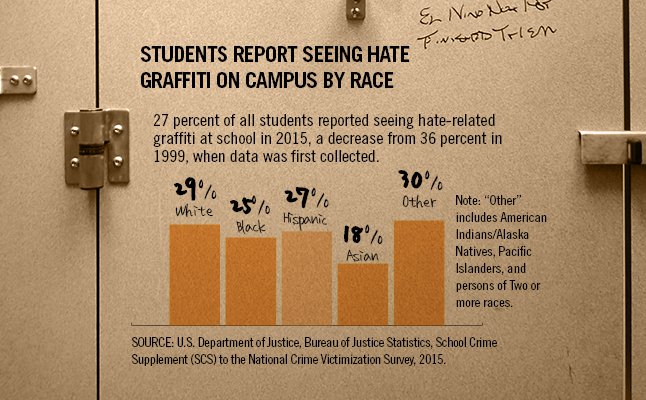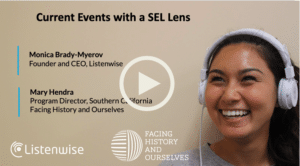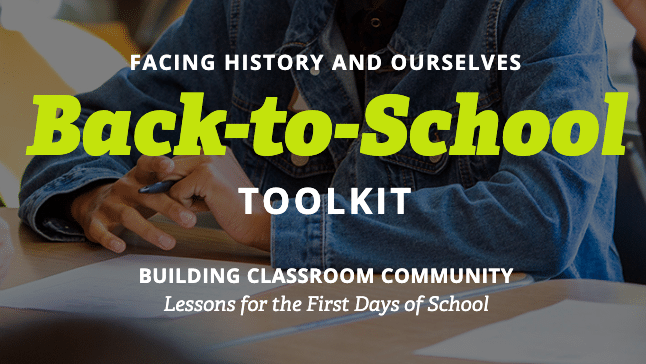As tragedy and violent news show up in the world you may be asking yourself, “What can I do to help my students feel safe, and how do I ensure that my classroom is a place that de-escalates hatred and fear?”

There have been many tragic incidents in the news since 2019 and a rise in documented incidents of hate in schools across the last couple of years. More than ever, this raises the importance of teachers creating a safe and nurturing environment for every one of their students. We believe it’s important that all students feel safe in school, valued by teachers and peers, and able to fully be themselves in the classroom.
In a Fall 2019 #sschat, Facing History and Ourselves hosted a conversation about being an “upstander.” FHO defines an upstander as “a person who speaks or acts in support of an individual or cause, particularly someone who intervenes on behalf of a person being attacked or bullied.” Read the archived chat to see how teachers are promoting upstanding behaviour in their classrooms.
This summer, hate has been in the headlines in our local communities and around the world. For example, recent Listenwise current events include stories about hateful manifestos and videos posted on the internet or about the dangers facing Central American migrants seeking asylum in the U.S. Below, we offer some helpful resources to help educators bring up current events in their classrooms and offer sensitive entry points to confront troubling violence and injustice, including terrorism, genocide, and attacks on human rights.
In this 30-minute webinar Listenwise hosted with Facing History and Ourselves, we discuss how the power of storytelling can bring social-emotional learning to the classroom and help students understand the experiences of others and empathize with them.
Here are some more high-quality resources from Facing History and Ourselves on Addressing Hate, Violence, Injustice. Facing History has also created a great back-to-school toolkit to help teachers create a supportive and inclusive classroom community. These lessons address how to effectively establish classroom norms that support students in learning to value differing perspectives, question assumptions, and actively listen to others.
Colorin Colorado has bilingual resources to facilitate talking with students about tragic events. Here are their 15 Tips for Talking with Children About Violence. This page is regularly updated with additional links to help teachers talk to students about the issues facing their communities and the world around them.
“Our classrooms cannot cocoon our students from the real world. We can begin talking through not only the recent violence in our country, but broader instances of systemic oppression related to white supremacy, anti-immigration sentiment, racism, and LGBTQ discrimination.” (source Urgent Need for AntiRacist Education)
Read our previous blog post that includes further resource links to Facing History, Edutopia, NY Times, and other sources to help teachers set the scene and create a safe space for talking about news and current events, even when they are difficult to discuss.


